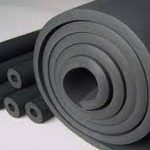2023-11-06 Pageview:1207
The effect of polyethylene wax on rubber bonding strength. Polyethylene wax can enhance the dispersion of fillers in rubber processing, improve the kneading and molding speed, increase the mold flow, facilitate demoulding, and improve the surface gloss of the product.

In addition to the use of relevant machinery during rubber processing, certain rubber processing additives also need to be added. Existing rubber processing aids include polyethylene wax, montan wax, etc. Mondan wax is a natural wax that has excellent functions in the rubber processing process, but is in serious shortage of supply. Polyethylene wax, on the other hand, is a synthetic wax and its supply is relatively stable.
Rubber processing (release) polyethylene wax has different functions in different processes of rubber processing and calendering: it can produce pure rubber, patterned rubber and cord, canvas, copper-plated steel wire cord, etc. Gluing of frame materials (gluing, gluing).
The main functions of polyethylene wax(PE Wax):
1. Lubrication and dispersion Generally, some fillers are added when mixing rubber or silica gel, and some add carbon black, calcium carbonate, talc, etc. Those that require high transparency will add some white carbon black and the like. Adding polyethylene wax can play a certain lubricating and dispersing role.
2. Anti-stick and demolding: General rubber is relatively sticky and easy to stick to the mold! Polyethylene wax can play a certain role in external lubrication.
Whether the surface of the bonded material is clean and inactive is the key to strong adhesion. Since the adhered materials will inevitably rust, oxidize, be stained with oil, absorb dust and other debris during processing, transportation and storage. These substances directly affect the adhesion, so they should be used during the bonding process. According to the nature of the bonding material, the surface cleaning treatment is first carried out. Commonly used methods include solvent cleaning, abrasive cloth grinding, sand blasting and chemical treatment. After appropriate surface treatment, the strength of the bonded joint can be significantly improved. , durability and fatigue life. In the production of tires, tapes, hoses, shock-absorbing products and rubber rollers, non-rubber frame materials need to be strictly processed to improve bonding strength and ensure the quality of rubber products.
 Leave a message
Leave a message



We’ll get back to you soon